Community Composting at Stokes Wood Composting Demo Site
On this page we will be looking at the Community Composting at Stokes Wood Allotment Compost Demonstration Site in Leicester. This complements the previous page, which looked at the display of compost bins on the site, by recording in greater detail the composting of organic materials left by plot holders to be composted in the Community Composting area.
Almost by definition this is will not be prime composting material, individual plot holders are likely to compost the "good" and relatively easy items from their plots themselves and pass the more difficult items such as perennial weeds over to be composted on the communal site. This is part of the challenge.
We would like to use batch composting, completely filling the each pallet bin in one go, but this is not always possible and in the first series of photos shown below the bin was a third filled each week as sufficient material was not avaialbe during April and early May.
The site Reception bins
The main area set aside for composting waste generated by plot holders who do not compost on their own plots consists of five open fronted pallet bins. We use open fronted bins to give easy access so that it is easier aerate the organic material by turning it from one bin to another. Ideally for the first 18-21 days the material should be turned every other day, but we are only able to turn it once a week
Two bins were designated for the reception of waste as it was hoped that plot holders would separate the material putting normal compostable waste, plant tops and leaves, annual weeds in Bin 1 and perennial weeds in Bin 2.
Ideally when dealing with waste containing a significant proportion of perennial weed roots or flowerheads with seeds the weeds would be dried, drowned or hot composted. We are normally only on the site once a week so are unable to turn (aerate) the material in the bins as often as is required to maiantain the temperatures necessary for hot composting e.g. every other day for the first few weeks. So we have the choice of drowning or drying weeds with seeds and roots. We ask that these are put in a separate Reception bin to make sorting easier for the composters but more often than not the waste is not separated into the different streams so we are left to separate it as it is transfered from the Reception bins to the first working bin. This means that some perennial roots and seeds will enter the composting process. Experience on this site, and elsewhere, shows that this is normal making it necessary to receive material only when the site is staffed or to accept that it will be mixed and treat both Reception bins the same i.e. sorting through the waste and separating it into different types as the bins are emptied.
Working Pallet Compost bins
This is a working site and while I would like to Hot Compost (Composting methods) the material submited this is not practical at this stage. We do not have enought material to make a batch that will fill the compost bins or time to attend the site to turn the material. More importantly we wanted to site to related to reflect what can be done with a reasonably managed allotment where the plotholders are keen on composting but wish to devote most of their time to actually growing crops (or if the sun is shining sitting with a coffee or tea watching them grow).
Plot-holders know that composting takes place more quickly if the material is cut into short lengths e.g. 1"-2" as this exposes a greater surface area to microbial action but this is not practical due to time and effort required. Most of them have a life other than composting.
Ideally the material being composted would be turned every two-four days to maintain a high temperature during its initial decomposition so as to kill pathogens and weeds and to compost the material quickly. Again most allotment gardeners do not consider this to be practical so we have adopted a system where the waste is turned weekly on Wednesdays. It is hoped that this will maintain a higher temperature than would be reached without aeration to compost the material in a three to six months but it will not be hot enough to kill pathogens
The photographs below show the decomposition progress as the weeks progress.
-
Week 1 Reception Bin
A mixture of annual & perennial weeds, with soil left on the roots
-
"Working bin" 1 week 1
Green waste layered with shredded paper at the start of the composting process.
More will be added to the bin until it is full -
Working bin 2 week 3
Material was turned from bin 1 into bin 2 in week 2 and has been left covered until week 3.
Guess the temperature of this bin (answer a couple of rows down at the end of the mornings work)
-
Week 3 Bin 2
Material turned back into the empty bin 1 Material is taken from the sides of the bin and placed in the what will be the middle of the new heap
-
Week 3
The newly aerated heap starts to take shape
-
Week 3
More waste is added from the Reception bin.
During the week fresh material has been left in the Reception bins by plot-holders most of this will be incorporated into the working heap.
-
Week 3
The bin with fresh Greens and more Browns being added
-
Week 3.
The bin is covered . The bin is now almost full. One more week should complete it.
The carved head is only acting as a weight to hold the cover in place. It has no other significance. -
Week 3
Temperature before the week 3 mixing and additions of more waste
-
Week 6. Cover removed
This shows the how the plant material has decomposed. Some will have been in the bin since Week 1 but some will have been added in Week 5.
-
Week 6
Material in more detail. The temperature before turning was only 30-34 C
-
Week 6
The contents have been aerated by being turned into another bin.
Week 8. The compost was turned again mainly because the bin was wanted for the next batch of composting.
Long grass mix
This week one of our Reception bins has been filled with long grasses which had dried almost to the stage of being hay. In true allotment fashion we have layered it into a pallet bin with green plants and some wood chip. Each layer was soaked as it was added. When checked after four days the temperature was a comfortable 50-56C. More water was added and the bin covered
-
Week 1 of composting: Heap with dried grasses as main component
-
Week 1 Temperature reading
Temperature recorded showing some creatures have been busy starting the decomposition.
-
Week 2 Heap being turned. Steaming nicely
The heap was turned. Not cutting the grass into short lengths makes it more difficult to turn but saves time.
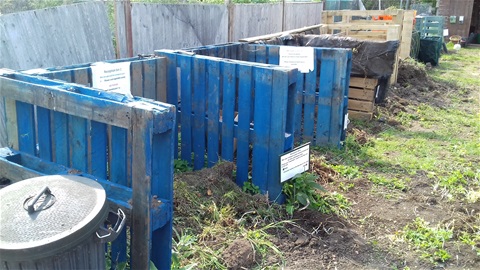
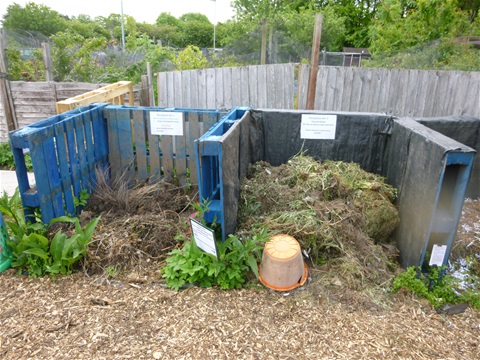
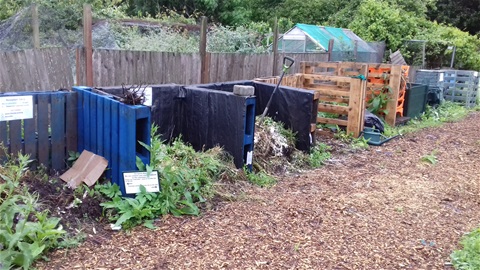
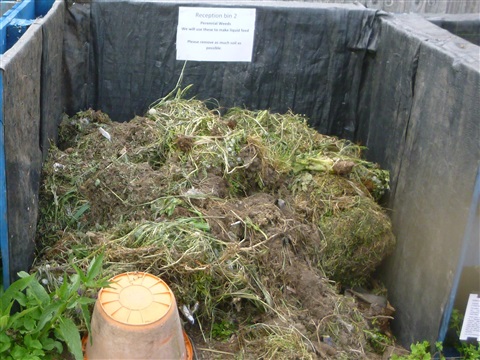
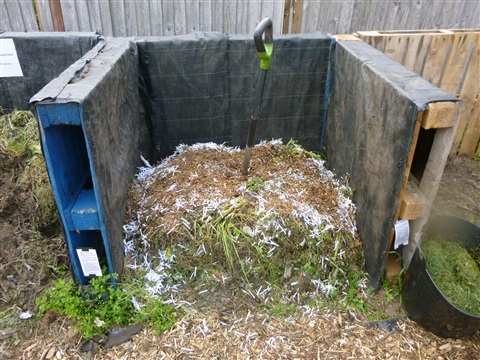
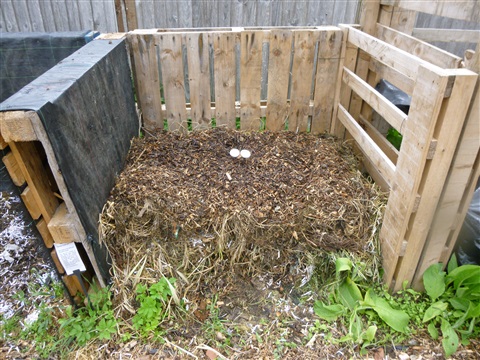
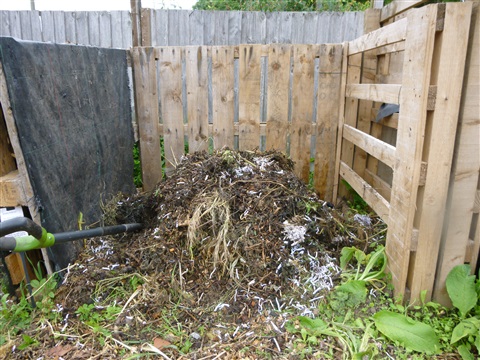
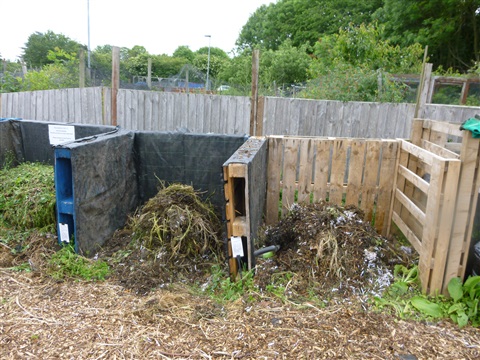
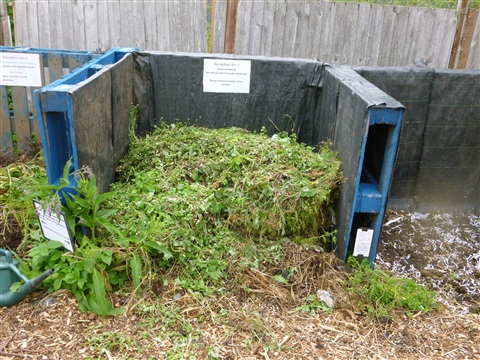
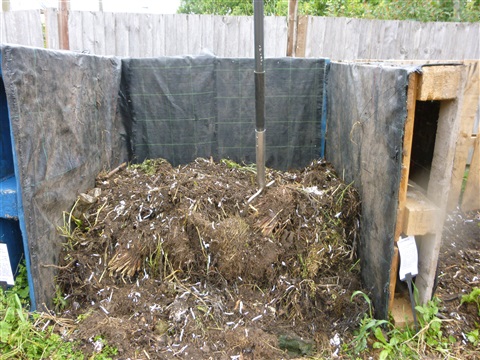
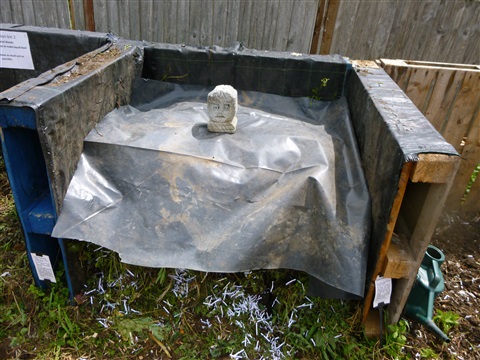
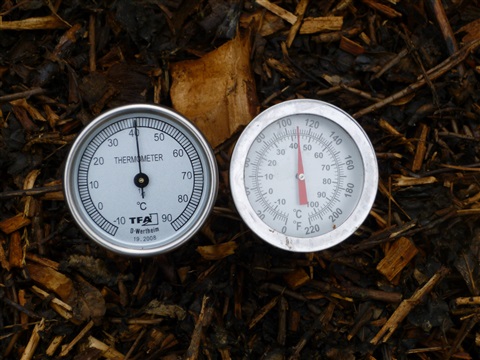
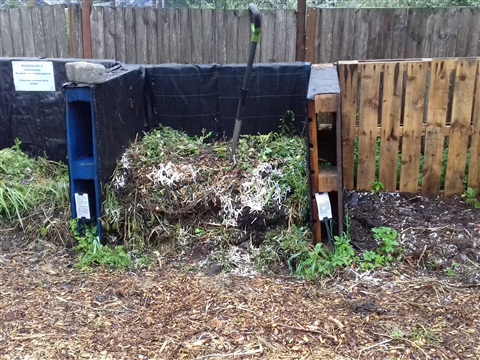
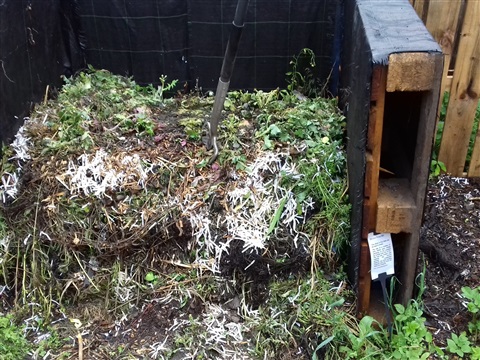
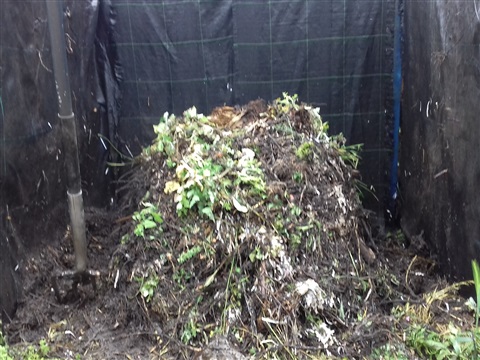
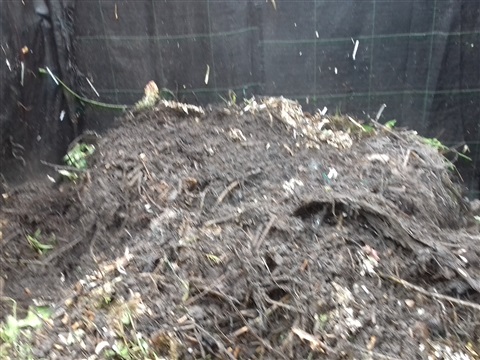
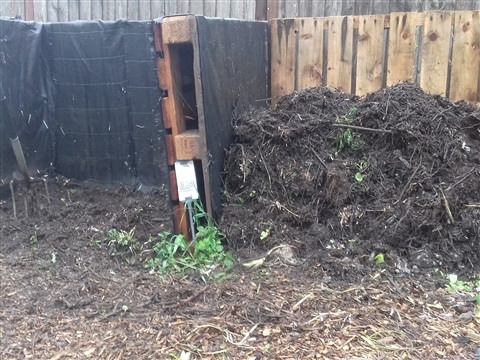
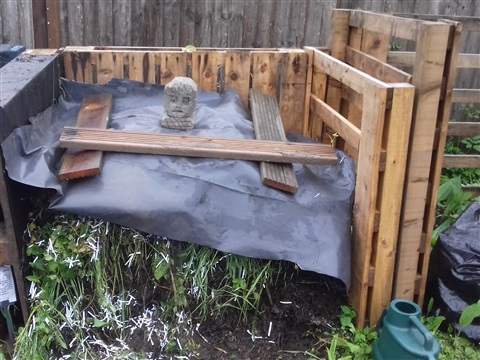
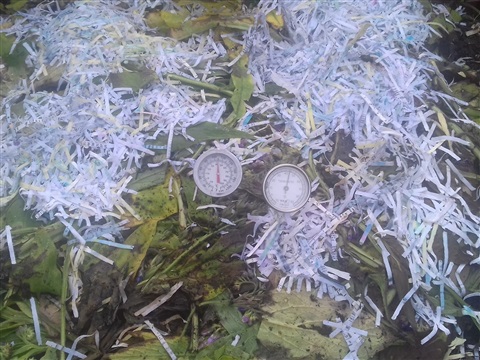
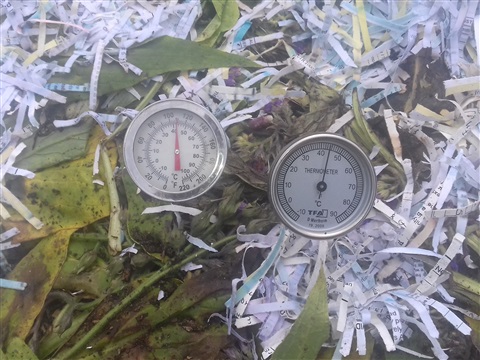
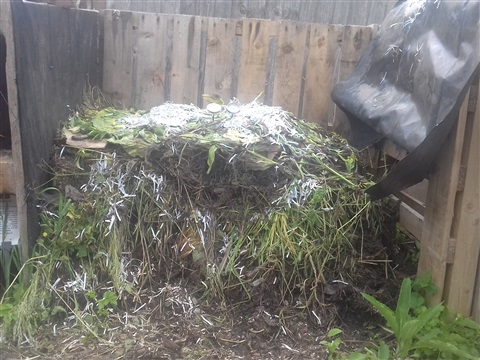
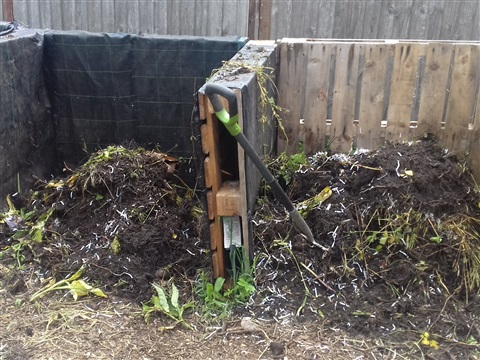
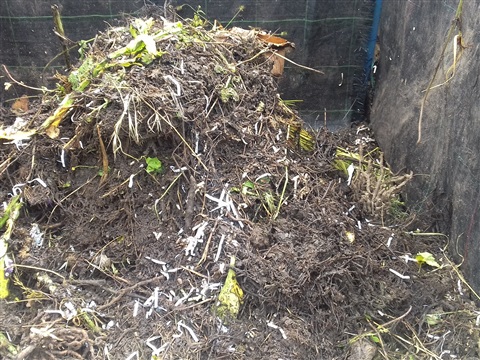
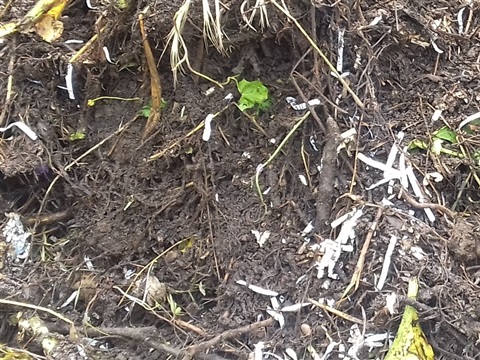
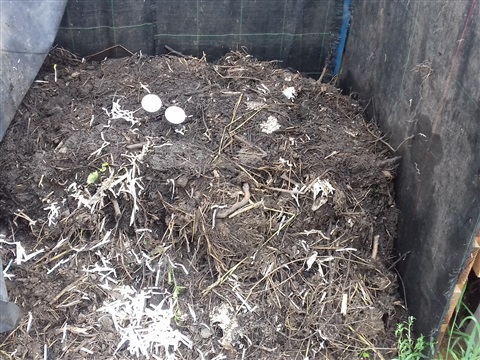
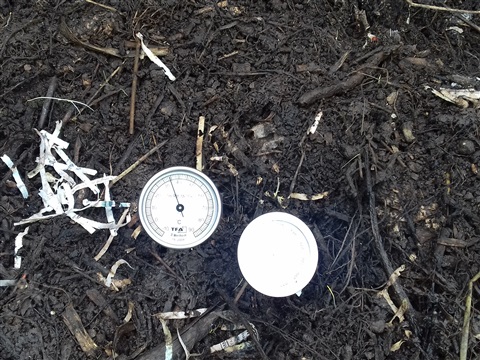
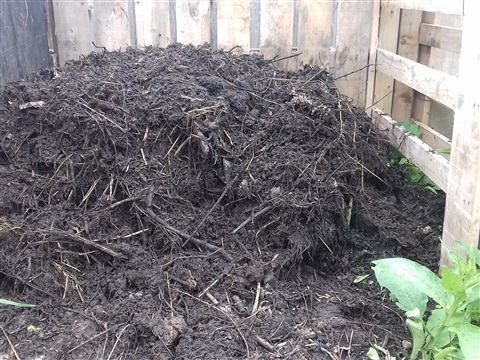
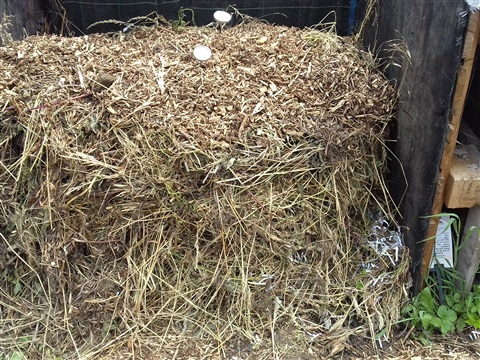
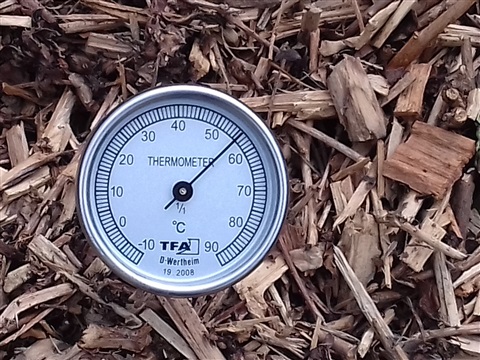
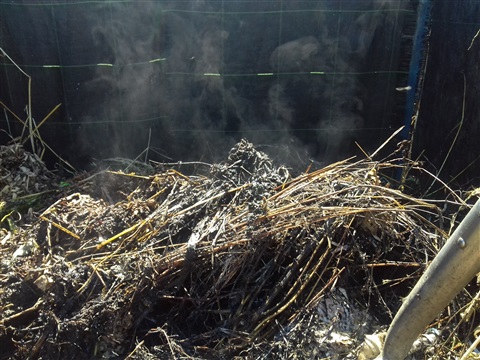
Latest comments
Do you have any data on ' application ' of Aerated Vermi Compost Tea to Mangoes and benneficial outcomes .
Very informative site. Having been away for 5 weeks and returning to evidence of rats under and around the compost bin, I can testify to lack of human activity allowing the rats to get comfortable.
can i use dog manure in compost and mulching leaves?
What is the C and N ratio for coffee chaff?